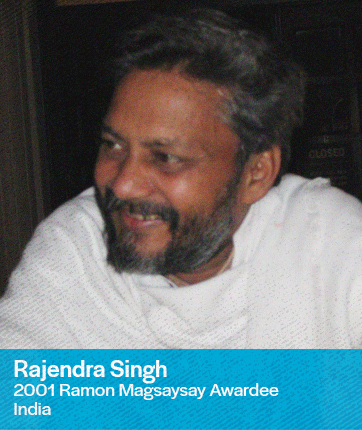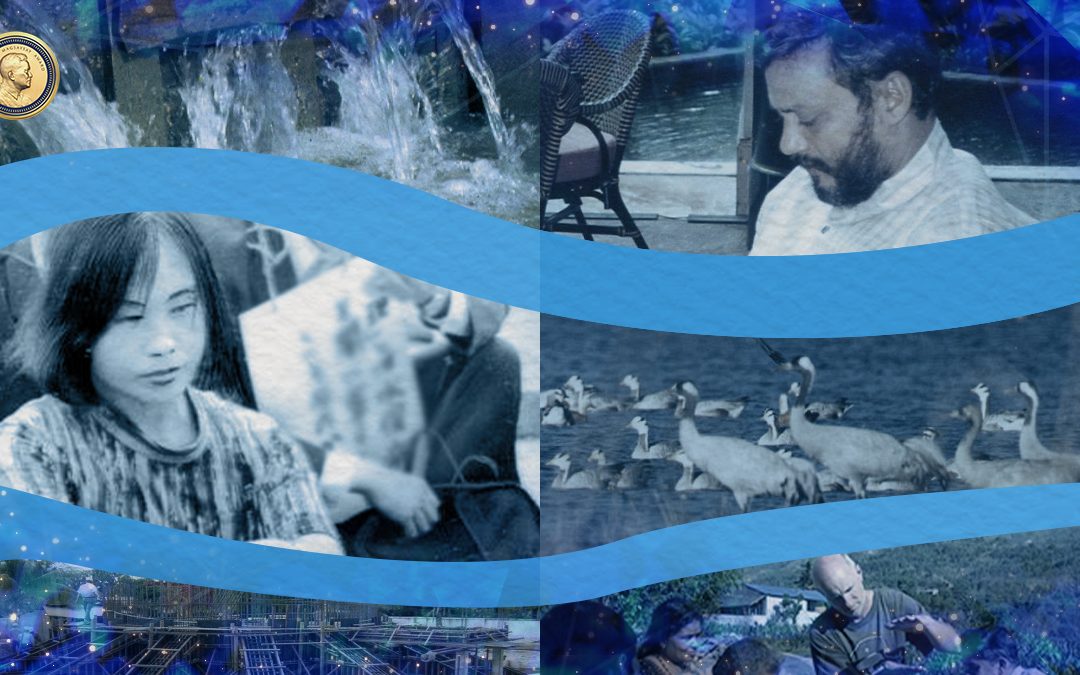Clean water and sanitation challenges are on the rise, affecting both children and adults. Studies reveal that contaminated water and poor sanitation are leading causes of death for children. But it does not stop there—communities can also be affected, resulting in decreased productivity when they fall ill.
These show that the significance of access to clean water in our communities cannot be ignored. With this increasing awareness of the risks associated with unclean water and inadequate sanitation, how does the Ramon Magsaysay Awardees contribute to the fight against these? A number of them are staunch advocates for Sustainable Development Goal (SDG) 6—ensuring access to clean water and sanitation for all.
What is SDG 6?
In 2015, the United Nations (UN) designed the Sustainable Development Goals (SDG), a collection of 17 interlinked objectives designed to serve as a “shared blueprint for peace and prosperity for people and the planet now and into the future.” But even before the UN formulated the SDGs, the Magsaysay Laureates, recipients of Asia’s premier prize and highest honor, have been working on these pressing issues of human, environmental, and global development.
One of these sustainable development goals is SDG 6 which aims for “clean water and sanitation for all.” In particular, the mission of SDG 6 is to “ensure availability and sustainable management of water and sanitation for all.” However, the 2022 SDG Report highlights the grave challenges posed by COVID-19 to all Sustainable Development Goals. SDG 6 then needs a four-fold acceleration to achieve its target by 2030. In Asia and the Pacific, nearly half of the rural population lacks improved sanitation, while rapid urbanization has increased the demand for water and wastewater treatment systems.
Who are the Magsaysay Laureates that advocate for this?
There is no denying that the world has made some serious strides in bringing clean drinking water and sanitation to more people. But the harsh reality is that there are still billions of people, mostly in rural areas, who are living without these essential services. In this sixth installment of our 17-part series, we are featuring Magsaysay Laureates who have risen up to the occasion and have addressed the challenges of pushing for clean water and sanitation across their respective communities. Here are a few of them:
 |
The Mekong River is not only known as one of the world’s largest rivers but also serves as support to the livelihood of millions of people due to its vast resources of water, fisheries, and nutrients. However, its beauty also faces numerous threats including overfishing and plastic pollution, and the effects of climate change have contributed to its decline. Some even worry that it is reaching a point of no return.
But there is hope. To address these challenges, the COMMITTEE FOR COORDINATION OF INVESTIGATIONS OF THE LOWER MEKONG BASIN AND COOPERATING ENTITIES was established in 1957 to bring together representatives from Cambodia, Laos, Thailand, and Vietnam. Their goal? To develop the river’s resources for the benefit of everyone on the surface, regardless of one’s nationality. To date, the Committee has crafted five strategic plans until 2030 for the development of the Mekong River Basin. |
| MICHIKO ISHIMURE, a housewife-turned-poet, used her powerful words to ignite a national response to the struggle among fishermen, farmers, and mass industrialization in Tokyo. Her collection of essays, “Minamata Disease My Dead People” shed light on the issue in the 1950s, leading to increased awareness and action from scientists, publicists, committees, and concerned citizens. While the battle is ongoing, it has prompted the chemical industry to take corrective measures. ISHIMURE received the Ramon Magsaysay Award for being the “‘voice of her people’ in their struggle against the industrial pollution that has been distorting and destroying their lives.” |
 |
 |
Immerse yourself in nature, just like what JIRO KAWAKITA did. His love for mountains led him to Nepal’s remote regions, where he designed an analysis system in the 1960s, known as the KJ Method or Affinity Mapping, to help villagers tackle urgent problems—one of which is securing drinking water without the need to carry it across mountains. KAWAKITA’s achievements in promoting exchange in Japan and Nepal exchange are extensive. Notably, he pioneered a water supply system in rural Nepalese villages through his research and understanding of their needs. |
| In the Alwar district of Rajasthan, India, SINGH started a small organization called Tarun Bharat Sangh (TBS or Young India Association) who has been working tirelessly to restore the region’s water resources. With the help of villagers and volunteers, SINGH has revitalized earthen reservoirs called johads, repaired wells, and planted trees to combat erosion. His efforts have also persuaded India’s Supreme Court to close harmful mines and open pits in Sariska National Park. SINGH received the Ramon Magsaysay Award for “leading Rajasthani villagers in the steps of their ancestors to rehabilitate their degraded habitat and bring its dormant rivers back to life.” |
 |
 |
The impact of war on the environment, specifically water, is undeniable. The chemical effects of war contribute to pollution, harming wildlife and ecosystems. But in the face of destruction, EK SONN CHAN, exemplified patriotism by leading efforts to repair and improve the water system in Cambodia. With a dedicated team, CHAN was able to locate and fix leaks, install meters, and eliminate illegal connections in Phnom Penh. Through perseverance and international support, his team were able to also establish a reliable billing program. |
| In the realm of dams and their social impact, YU emerged as a key advocate in China. YU founded Green Watershed, a non-profit organization that spearheaded an integrated watershed management program in Yunnan’s Lashi Lake region. Lashi suffered from a dam project that disrupted the lake’s water, farmlands, and livelihoods of the locals. YU and the Green Watershed team then facilitated the formation of the Watershed Management Committee and rallied village associations towards irrigation, fishery, and other relevant solution-building approaches. As a result, the movement flourished with new, eco-friendly, and profitable ventures. The Lashi Project, a pioneering endeavor in China, garnered recognition from the government as one of the country’s top ten sustainable development cases. YU received the Ramon Magsaysay Award for “fusing social science knowledge with a deep sense of social justice, in assisting dam-affected communities in China to shape the development projects that impact their natural environment and their lives.” |
 |
 |
China faces a major environmental challenge with water pollution. Its rivers, particularly the Huai River, are heavily contaminated due to industrialization. HUO DAISHAN, a newspaper photographer, saw firsthand that the water pollution poses a serious threat to the health and livelihoods of millions in China. It has even led to the rise of “cancer villages” where tumors and cancers are widespread due to contaminated water. HUO then took it upon himself to document the river’s pollution and raised awareness about this issue. Starting with a simple exhibit of photographs on a clothesline, he captured the attention of the public and shed light on the tragedy of Huai. This paved him to be at the forefront of mapping the river’s basin and spearhead projects on investigation and monitoring of sources of water pollution within his community. |
| Building technology to serve the poor is no easy task. But for ALTERNATIVE INDIGENOUS DEVELOPMENT FOUNDATION, INC. (AIDFI), it is a challenge that people must take on. AIDFI is a social enterprise on a mission to combat rural poverty. How do they do it? By creating and promoting eco-friendly technology that not only improves lives but also helps increase income for the poor. Their breakthrough came when they revamped an ancient technology called the ram pump. By using the natural energy of flowing water from rivers and springs, the redesigned ram pump can lift water uphill without the need for fuel or electricity. In 2011, the AIDFI received the Ramon Magsaysay Award for “their collective vision, technological innovations, and partnership practices to make appropriate technologies improve the lives and livelihoods of the rural poor in upland Philippine communities and elsewhere in Asia.” |
 |
What part do you play?
While achieving equality and ensuring clean water and sanitation may seem an impossible task, given the differences in privilege among individuals and countries, you can make it possible in you own ways. You may practice mindful water usage or even spread awareness about water conservation within your community. If you share the same vision and want to be a part of making it a reality, you may reach out to us now. And together, let’s discuss how we can connect you with a Laureate who can collaborate with you on a potential shared project on ensuring clean water and sanitation for all.









